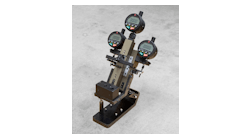Five Ways to Control Costs When Maintaining Your Biz-Jet's Engines
Throughout the lifetime of an aircraft, the engine is commonly the most expensive part to maintain. Understanding the aircraft engine requirements can help you make informed decisions for your specific situation. Each step of properly maintaining turbine engines can have significant costs, and controlling these costs throughout the life of the engine can save hundreds of thousands of dollars. Focusing on the following areas will enable you to save money, time, effort and energy throughout the process.
1. Selecting a Service Center
Selecting a suitable service center for your type of aircraft and engine can be one of the most important choices in understanding and controlling the costs. When evaluating a service center, consider the following:
* Choose a service center that has appropriately trained technicians on your engine model.
• Verify that the service center has technicians that have put their technical training into action in your particular installation. Oftentimes technical training is only part of the equation where experience can lead to higher efficiencies, lower downtime and less chance for costly mistakes.
• All of the equipment required to meet your needs (including engine removal and reinstallation) needs to be located at the facility. This includes any required special equipment needed to complete all in-house engine and performance runs. If this is not the case, you may be paying part or all of an equipment rental fee.
• Ask about the relationship between the service center and the engine OEM. A good relationship with an engine vendor can be very important if a more serious engine issue is discovered, and that relationship can ultimately save time and money. In addition, the engine vendor may have a mobile team that can be used in a remote situation.
• Understand how well-staffed the service center is by knowing the hours of operation and number of shifts that are worked. The number of technicians and hours of operation can be critical to saving downtime and are often overlooked.
• Request a copy of the selected facility’s certifications and authorizations.
• A major service center has intimate knowledge of how engine programs work and has the right resources to help you understand how to maximize coverage of the program and avoid any unnecessary pitfalls or additional costs.
2. Line maintenance
Engine line maintenance is defined as anything that can be completed at the appropriately rated service center level. These items include removal and installation of all external components and engine accessories, including hot section inspections. The majority of line maintenance is scheduled and listed in the aircraft manufacturer’s inspection guide. It is much more cost effective to properly maintain aircraft engines so that issues can be discovered prior to causing substantial damage. The service center should also be reviewing the engine manufacturer’s required inspection items. During line maintenance, engine parts will most likely need to be repaired or replaced. You can help control costs of those parts by understanding:
• Can the part be overhauled or repaired?
• Are there advantages to getting a part overhauled instead of repaired to control costs in the future?
• What is the warranty on a replaced part?
• What is the difference between repaired, overhauled, or new?
• If a part needs to be repaired, are there other items that can be taken care of during this repair to save time and money in the future?
• Have there been multiple quotes for a repair or replacement to get the best price?
• Is there a core charge and will there be bill backs for the core?
3. Heavy Maintenance
Heavy engine maintenance can be defined as the repair of internal engine components beyond the scope of normal line maintenance. It can be one of the largest expenses in your aircraft’s operation, and understanding the costs by asking the right questions can make a big difference. Heavy maintenance is primarily Engine Overhaul (OVH) or Core Zone Inspection (CZI). It can also include substantial engine disassembly and/or engine removal and reinstallation, engine service bulletin embodiment, engine repair from foreign object damage (FOD), major periodic inspection (MPI), or hot section inspection (HSI) that require engine removal. In order to save time and money, ask the following questions:
• How quickly can this work be completed?
• Can the engine work be combined with other items such as, an airframe inspection, paint and interior upgrades, or avionics upgrades?
• Is the engine vendor a manufacturer’s authorized service center?
• What is the warranty for the engine work?
• Are any parts being used that may impact the warranty on the remainder of the engine?
• Have we received quotes from multiple vendors?
4. Unscheduled Maintenance
Unscheduled maintenance is any unplanned engine maintenance. Issues can occur in remote areas or airports that are not staffed with appropriately rated technicians. In these situations, the primary financial savings is time. Having a previously established relationship with a suitable service center can make all the difference, as they will have the ability to quickly dispatch technicians. If needed, they can also involve the appropriate engine vendor to ensure your issue is taken care of in the most expeditiously and cost effective way.
5. Documentation of Maintenance
Documentation of engine maintenance is an extremely important facet to controlling costs. Make sure your service center has a quality control or inspection department to properly document any work that is being done. Make sure all of the following is happening throughout the process:
• The current engine times and cycles are documented to include hours since overhaul or CZI, cycles since overhaul or CZI, hours since hot section or MPI and cycles since hot section or MPI.
• During any heavy engine maintenance, the cycle sensitive item component cards should be updated and installed in the logbook.
• All engine service bulletin documentation should be updated.
• All Airworthiness directives should be signed off as either completed or not applicable, and a signed AD log should be installed in the logbook (this simple step can save research time and money in the future).
• An optional but valuable step to consider is making a copy (electronic or paper) of all logbooks; ensure the copy is stored either electronically or paper copies in a safe place.
Improper documentation can be one of the most frustrating costs if not correctly completed, and the steps outlined above can amount to a substantial cost savings.
Understanding the requirements of your engines can make all the difference in controlling costs throughout the life of the engine. Get involved and ask the right questions to make sure you are getting what you pay for. The engine is one of the most important components on your aircraft and if taken care of correctly at the right price, you know you are doing the right thing for you and your company.
Mike Saathoff has over 20 years of experience in corporate aircraft maintenance. He has held several service technician and Quality Control positions with Elliott Aviation and currently serves as the director of sales operations & engine and accessory sales. He has an Airframe and Powerplant and Inspection Authorization license with the FAA.



